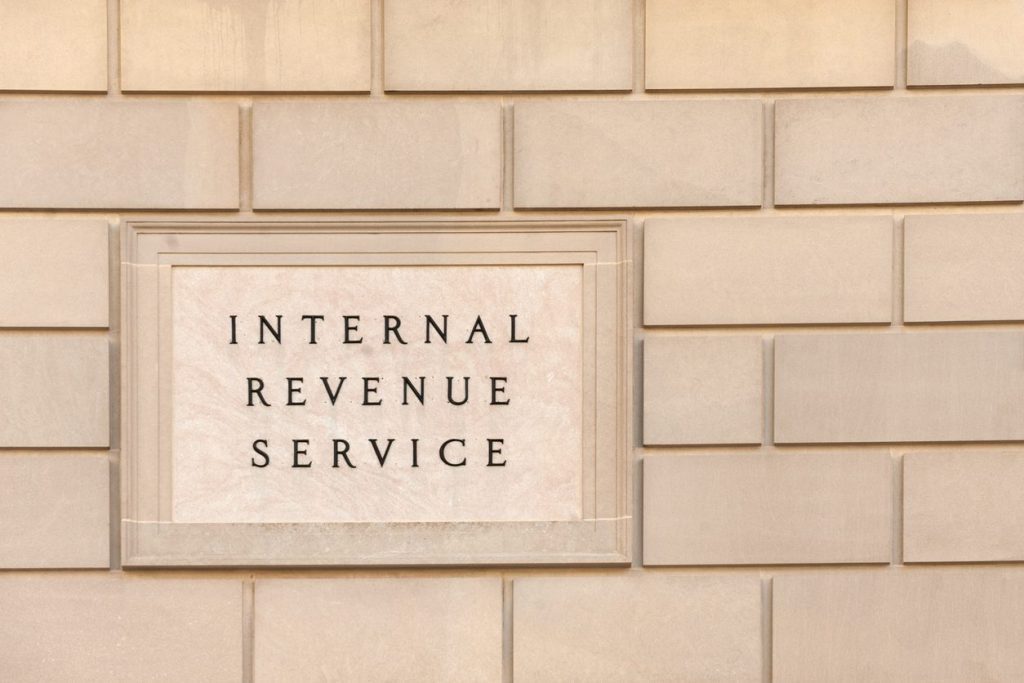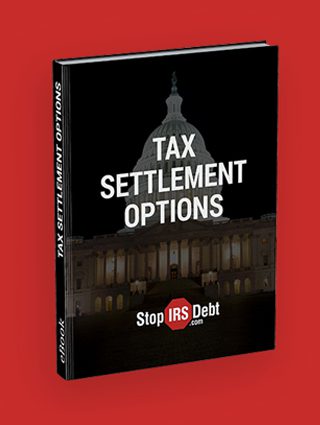- browse by category
- Audit Assistance
- Business and Taxes
- Celebrities in Tax Debt
- Cryptocurrency Taxes
- Economic News
- Foreign Banking
- Innocent Spouse
- IRS Headlines
- IRS Wage Garnishment
- Marriage & Divorce
- Payroll Tax
- Retirement
- Revenue Officers
- State Tax Headlines
- Stop IRS Debt
- Success Stories
- Tax and Politics
- Tax Attorney
- Tax Codes
- Tax Debt Help
- Tax Evasion
- Tax Levy
- Tax Lien
- Tax Payment Plans
- Tax Return Filing
- Tax Tips

Let’s face it: Tax debt is scary. And for the millions of Americans dealing with tax debt, facing it takes a lot of courage, creativity, and hard work. A lot goes in to achieving that fresh start—and it may even include the IRS Fresh Start Program.
After over 20 years helping our clients address all matters of tax issues, we know there’s no reset button on tax debt. There’s no silver bullet or magic spell that instantly resolves your issues with the IRS. But for some struggling with tax debt, the IRS Fresh Start Program is the next best thing.
If you’ve heard anything about the IRS Fresh Start Program, you’ve probably heard the rosiest highlights only. Developed by the IRS, the initiative can radically transform your situation with the IRS. It can help you get back to where you used to be: a debt-free life.
Of course, it’s a bit more complicated than that. The IRS Fresh Start Program doesn’t apply to everyone, but understanding how it helps people tackle their tax debt will actually help you understand how you can start tackling your own.
Since we’re all about helping our clients understand the ins and outs of their tax situation, we wanted to give you the basics on the IRS Fresh Start Program. We’ll cover what it is and how to qualify, and then explore a few other common strategies for combating serious tax issues.
What is the IRS Fresh Start Program?
The IRS developed its Fresh Start Program way back in 2011 as a way of helping individual taxpayers and small businesses pay their federal taxes.
The fresh start initiative gives greater flexibility to taxpayers, helping them get back on the right track. The program includes a number of debt relief options with the IRS. Some of these options lower your total tax bill, while others give you added flexibility on payment agreements.
As much as it may not seem like it, the IRS doesn’t actually want to have you stuck in tax debt. But between various penalties for failing to file or pay, along with interest, it’s not uncommon for even a small tax bill to balloon over time. In the eyes of the IRS, some repayment is better than no repayment. So if they can encourage that repayment and help you get a fresh start, that’s a win-win for everyone.
Qualifying for the IRS Fresh Start Program
The Fresh Start program is available to every single taxpayer. That’s kind of the whole point. But whether you qualify for one of the above methods is another matter. Fortunately, there’s usually something for everyone. That’s one of countless reasons why you should always work with a trusted tax expert if you’re looking into the IRS Fresh Start Program.
Here are some of the broader requirements you may need to qualify for the program:
- You’re current on your taxes. Unfiled tax returns tend to come hand-in-hand with tax debt, but the IRS wants you to get up-to-date on your filing. This will help as you and the IRS get a handle on your taxes and financial situation.
- You have the correct withholdings. Your withholdings tell your employer how much they need to take out of your paycheck. But mark too many, or too few, and you may end up with a tax bill. Ensuring your withholdings reflect your real life situation (think number of dependents, single or married, etc.) goes a long way to help the IRS establish trust.
- Your income falls under certain limits. The IRS designed its Fresh Start program to help people mired in tax debt. And in their view, those with higher incomes may have an easier time repaying—and therefore, may not need the help so desperately. As a single filer, your annual income can’t exceed $100,000. As a joint filer, your combined income can’t earn more than $200,000.
- Your balance isn’t too high or too low. The Fresh Start initiative doesn’t exist for taxpayers who owe the IRS $150. In fact, it actually bumped up its own threshold for issuing tax liens (in most cases) up to $10,000. The programs are designed to help resolve serious issues, which generally cap at $50,000. Above that number, you should take even greater care to work with a professional tax relief company for further guidance.
- Self-employed taxpayers must prove their income has dropped. As you might guess, things get more complicated for self-employed taxpayers. They must prove their net income has dropped 25 percent.
Since 2011, some updates to the program have expanded the flexibility of the program in a couple of areas. But the basics have remained the same. Here’s an overview of what Fresh Start includes:
1. Currently Not Collectible (CNC)
There’s no “good” time for tax debt. Indeed, some times are worse than others. In cases when you owe the IRS but can’t pay due to your current financial situation, you may qualify for Currently Not Collectible (CNC) status.
CNC status will put a temporary pause on collections, including levies. However, the IRS will continue assessing penalties and interest, send you an annual bill, and may hold your tax refunds and apply them to your tax total.
To apply, you may need to provide additional financial information. Here’s a quick video from a division of the IRS helping explain CNC status.
2. Offer in Compromise (OIC)
According to the IRS, an Offer in Compromise helps you settle your tax debt for less than the full amount you owe. It may be the right option if you can’t pay the full bill, or if paying the full bill would create a financial hardship. It lets you settle your tax debt, and the IRS get its hands on some portion of the tax owed.
The IRS will consider a few factors when deciding whether you’ll qualify for an OIC. They consider each case individually, and consider the facts including your:
- Ability to pay
- Income
- Expenses
- Asset equity
The IRS won’t consider you eligible if you have an open bankruptcy proceeding. And the IRS actually approves less than half of the OIC applications it receives each year. If you’re curious about pursuing an Offer in Compromise, you want to have an expert on your side and put your best foot forward.
3. Installment Agreement (IA)
When an unexpected bill arises, most people don’t just have $15,000 laying around to throw at it. This holds true when it’s time to pay down a major tax debt. Fortunately, the IRS and state tax organizations will generally allow you to set up payment plans to handle your tax total over time.
Not everyone will qualify for an IRS installment agreement. The IRS will consider a number of factors:
- Assets, including checking, savings, and brokerage accounts
- Ability to borrow
- Asset equity
If the IRS approves an installment agreement, you’ll set up a monthly installment to pay each month until your balance is eliminated.
4. Penalty Abatement
For most people struggling with tax debt, it isn’t just the assessed tax total they end up having to deal with. As soon as you miss the tax deadline, the IRS begins assessing interest and penalties, which stack up over time (with penalties, up to a point).
Fortunately, the IRS is usually on board with reviewing your penalties should you request them. You can even get them removed! However, the process offers a steep challenge for most taxpayers who don’t possess a deep knowledge of tax codes and procedures.
Among other things, the IRS will look for reasonable cause. And no—forgetting to pay, or waiting until the last minute, does not count as reasonable cause. The IRS will want to see that you used the resources and avenues available to you to try to file and pay your taxes.
Here are a few things that usually qualify in the eyes of the IRS:
- Natural disasters, such as hurricanes and fires
- Difficulty securing your records
- Death or serious illness impacting you or a member of your immediate family
If any of these situations impacted your ability to pay your taxes on time, you may qualify for penalty abatement. But because the IRS denies so many applications for penalty abatement, you should definitely work with an expert.
Getting the Help You Need Today
So, what’s next? You know how the IRS Fresh Start Program works to help those burdened with severe tax debt. We’ve covered why the program exists and a few of the methods it uses to help taxpayers, and how to qualify.
Now, it’s time to take the next step. If you’re facing down a big tax bill, you may have found a new tool to help you reach your goal. But you shouldn’t go it alone. Applying for most of the tools within the Fresh Start initiative require an expert’s guidance to ensure you get approved when you qualify.
You’re already taking the first step to a brighter financial future by reading this article. So the next step will feel that much easier. And before you know it, you’ll have put enough steps together on this path that your tax debt will be nothing more than a speck on the horizon.
Are you saddled with $10,000 or more in tax debt? You don’t need to carry that burden alone. Send us a message via our free live chat—and one of our tax experts will get you the help you need.
Leave Comments

Top Tax
secrets revealed
Sign up for our newsletter and be the first to find out when exciting IRS news happens. Yes, exciting. We're really into taxes.


